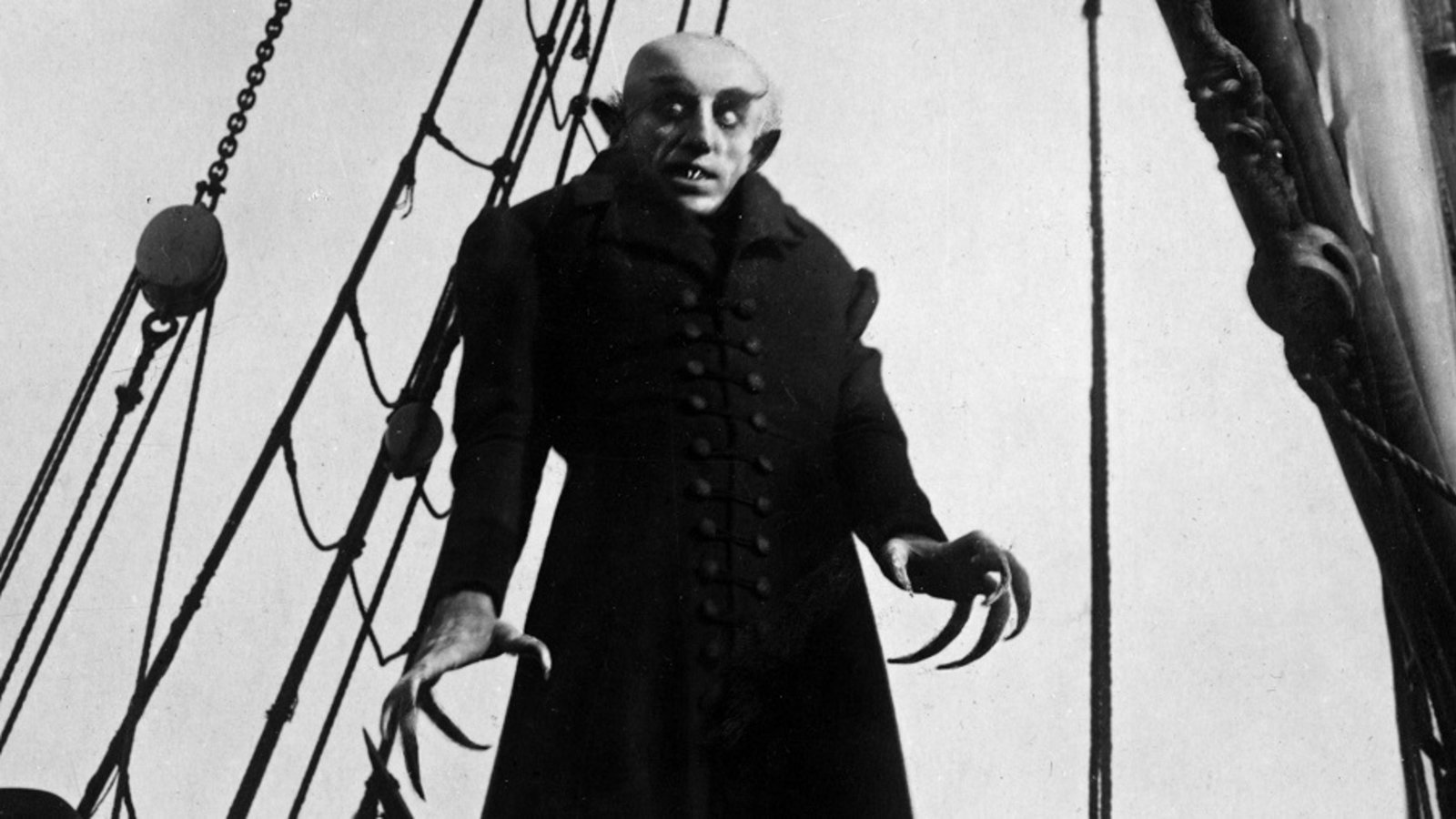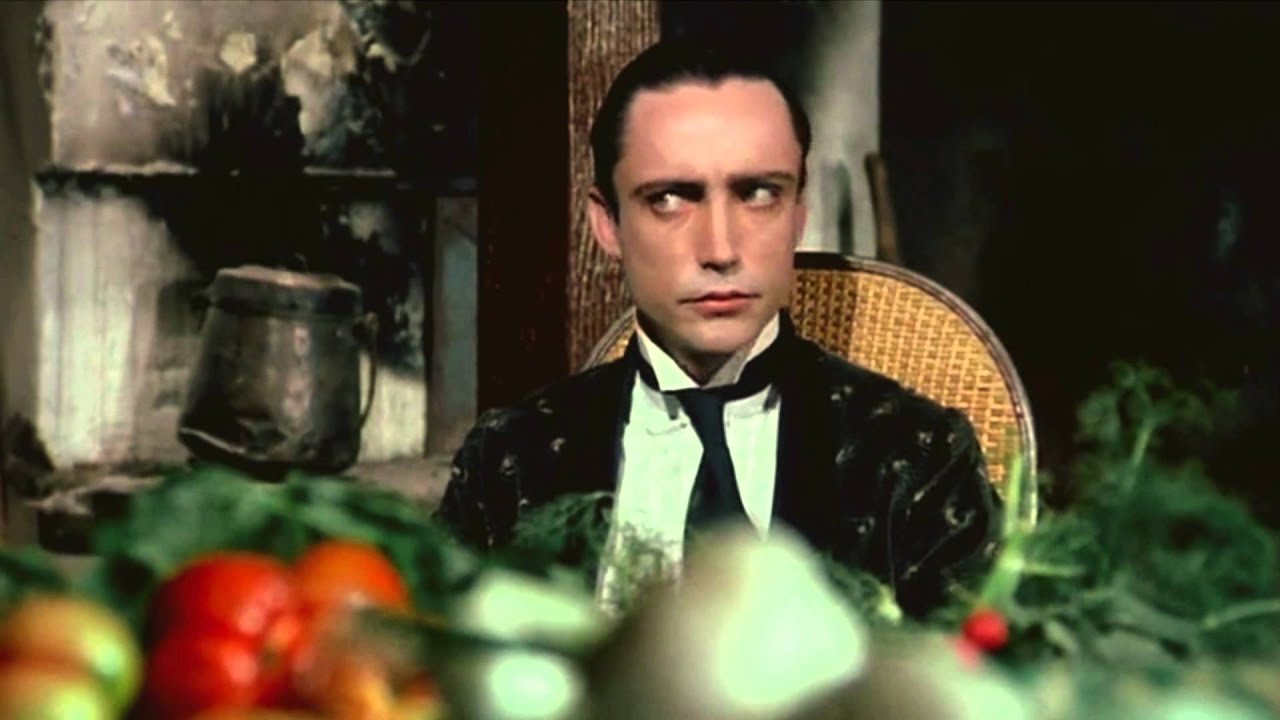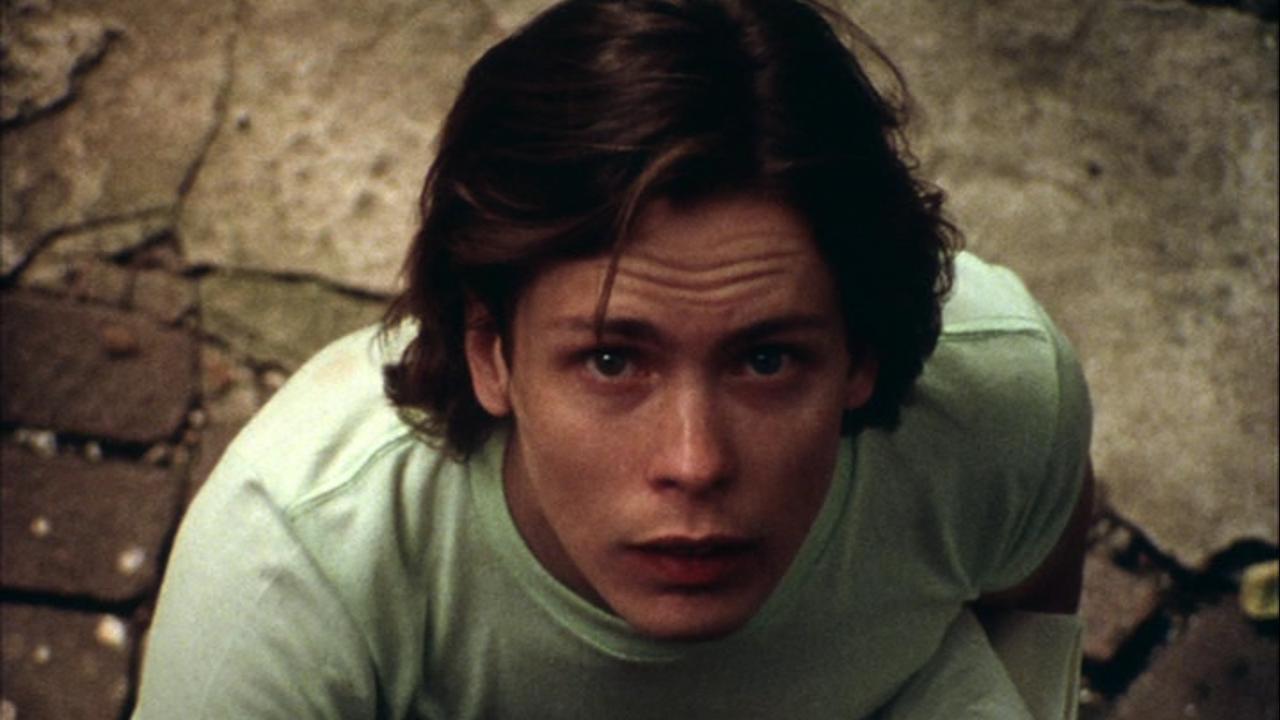
For as long as people have told stories, there have been vampires in our folklore: in orally transmitted tales, in novels, and more recently, in film and television. They go out of fashion once in a while, but then they come back with a vengeance and a hunger for the macabre. The vampire is a timeless element of fantasy. It’s time to dig into its history.
Mythology with Fangs
Supernatural beings who drank the blood of innocent humans have popped up in almost every culture across the globe, from Antiquity and well into the Middle Ages. From the Indian vetālas and the Babylonian Lilitu (synonymous to the Hebrew Lilith) to the Ancient Greek Lamia and the Brazilian Jaracaca, and from the Eastern European versions including the Romanian strigoi, the African Asasabonsam, the Old Norse draugr, and the old-fashioned English revenant, our storybooks are loaded with blood-drinking fiends of the night.
Our fascination with these mythical creatures even devolved into a terrible frenzy during the 18th century, which saw corpses staked and graves dug open to identify and destroy potential revenants. In that age, the immortality that bound one’s body to the night was a work attributed to the Devil himself. The only eternity that a soul could wish for came after death and with a proper burial for those so-called true Christians. Vampires were frightful creatures, capable of terrible things, a dark mirror image of ourselves, in the end, so of course, they thrived!
 ILLUSTRATION BY DAVID HENRY FRISTON FOR ‘CAMILLA’ BY SHERIDAN LE FANU
ILLUSTRATION BY DAVID HENRY FRISTON FOR ‘CAMILLA’ BY SHERIDAN LE FANU
A Silver Screen for Nosferatu
When the 20th century came around, people had a new medium to tell vampire stories through. German director F.W. Murnau brought forth ‘Nosferatu: A Symphony of Horror’ in 1922, which introduced Max Schreck as Count Orlok. It was an unauthorized adaptation of Bram Stoker’s ‘Dracula’ novel of 1897—the first slightly more romantic take on the infamous bloodsucker.
In Murnau’s version, the charmingly terrifying vampire has an interest in a new residence and in his estate agent’s wife, portrayed by Greta Schröder. Today, ‘Nosferatu’ is a jewel of early cinema, even though Stoker’s heirs sued over copyright infringement. A court ruling ordered all copies of the film to be destroyed, but several prints survived. In 1929, seven years after its German premiere, ‘Nosferatu’ was released in the United States, later becoming one of the most influential masterpieces of the silver screen. So influential, in fact, that Werner Herzog revisited it through a breath-taking homage titled ‘Nosferatu, the Vampyre’ (1979).
 ‘NOSFERATU: A SYMPHONY OF HORROR’ (1922)
‘NOSFERATU: A SYMPHONY OF HORROR’ (1922)
Stoker’s Dracula Revisited
After Murnau’s foray into the vampire fantasy, Tod Browning took on the challenge of an authorized adaptation of Bram Stoker’s novel—by proxy, since the film is actually based on the 1924 stage play written by Hamilton Deane and John L. Balderston, which, in turn, is based on the novel. Yes, this is quite the copyrighted pretzel! Garrett Fort penned the screenplay, and legendary actor Bela Lugosi played the part of Dracula in what quickly became a veritable oeuvre of its genre and generation.
It had an enormous commercial and critical success upon its release, and Lugosi’s version of Dracula quickly became a cultural icon, recognizable anywhere. He also served as the central framework for future vampire characters which would later blossom in the minds of writers like Anne Rice and Stephen King, to name but a few. The classy and deadly type. Eventually, ‘Dracula’ (1931) was selected by the United States Library of Congress for preservation in its National Film Registry, which deemed the film as ‘culturally, historically, or aesthetically significant’.
 ‘DRACULA’ (1931), ©UNIVERSAL PICTURES
‘DRACULA’ (1931), ©UNIVERSAL PICTURES
The Politically Infuriated Vampire
Over the decades following Browning’s ‘Dracula’, the vampire myth didn’t find much appeal within the film world. There was the occasional European dip such as ‘Daughters of Darkness’ (1971), but nothing truly notable until Bill Gunn arose and slapped America with ‘Ganja & Hess’ (1973), a racially tinted and remarkably audacious vampire tale. It chronicles a short-lived but mesmerizing affair between a wealthy widow named Ganja and Hess, a vampiric anthropologist with an impressive hold on his powers.
Hess is turned by Ganja’s husband, portrayed by the director himself, with the aid of a Myrthian dagger inherited from an ancient tribe of African blood drinkers. The film’s dominating conclusion is that even with his complex knowledge of the history of his people, Duane Jones’s Hess has not yet truly felt the anger of the tragedy that befell the African people—not until the dagger. It’s an interesting transformation to observe, dabbling through painful history and societal issues that are still hard to take off the table. Worth mentioning here is that years later, Spike Lee did a remake of ‘Ganja & Hess’ titled ‘Da Sweet Blood of Jesus’ (2014).
 ‘GANJA & HESS’ (1973), ©KELLY/JORDAN ENTERPRISES
‘GANJA & HESS’ (1973), ©KELLY/JORDAN ENTERPRISES
A Parody of Bloodsuckers
Once upon a time, the vampire was still a relatively young creature in the pages of cinema, so certain directors (Paul Morrissey) and certain producers (Andy Warhol, of all people) decided that it would be a fabulous idea to create a farcically impotent version of Dracula, brought to life by Udo Kier in ‘Blood for Dracula’ (1974). This particular bloodsucker’s problem is that his body is getting weaker due to the dwindling number of virgins for him to feast on. His quest for ‘pure blood’ takes him to Italy, where eye-candy Joe Dallesandro bangs his way through the countryside with a thick Brooklyn accent in order to literally starve Dracula out.
With no virgins left, the night-lord will eventually wither and perish, giving a whole new meaning to the concept of ‘morning wood’. On one hand, viewers would find it easy to laugh at an impotent vampire, but Kier’s portrayal also represents the slow death of classicism in the face of a sexual revolution.
 ‘BLOOD FOR DRACULA’ (1974), ©ANDY WARHOL PRESENTATION
‘BLOOD FOR DRACULA’ (1974), ©ANDY WARHOL PRESENTATION
Mr Romero’s Take
George Romero was no stranger to the horrors of supernatural. The vampire, in fact, was one of the primary influences for the filmmaker from a young age. Most might remember the master’s legacy through works like ‘Night of the Living Dead’ (1968), but it’s ‘Martin’ (1977) that made it into our vampiric compendium. It is a surprisingly inventive gem of its genre, uplifting the vampire mythos through its titular teenager. The kid gets his blood through syringes, and he’s one hell of a seducer. Mr Lugosi wouldn’t hold a candle to the strangely dazzling Martin.
There have been numerous imitators who have tried to claim Romero’s crown for ‘Martin’, though few filmmakers were ever able to deliver such psychological malaise by challenging the viewers’ imaginations. This young vampire holds his ground as a splendiferous anomaly and as an homage to the blood drinkers’ trope.
 ‘MARTIN’ (1977), ©LAUREL PRODUCTIONS
‘MARTIN’ (1977), ©LAUREL PRODUCTIONS
The Vampire Next Door
It’s safe to say that this trend started in 1985 with Tom Holland’s ‘Fright Night’, starring Chris Sarandon as the deviously seductive vampire who taunts his teenage neighbours by bringing a new girl home to victimize every night. There is a hilarious twist here, as the unexpected teen heroes enlist the services of an actor who kills vampires on TV to destroy the debonair bloodsucker. It’s an interesting collision between the voyeuristic cinema that Brian De Palma was better known for in the early ‘80s—works like ‘Body Double’ (1984) and ‘Dressed to Kill’ (1980), among them, and the teen comedy style that frequently pitted the unpopular boys and girls against the star athletes and mean bubble-gum cheerleaders.
It was the first time that the vampire was connected to adolescent angst, and it created an interesting effect over the following decades, as both the big and the small screen gradually noticed the nocturnal fiend’s appeal to younger audiences. By then, Anne Rice’s ‘Interview with the Vampire’ novel was already sparking raucous fires among readers with its romanticized immortals, though it would take another nine years for Lestat to reach the silver screen. ‘Fright Night’ was remade in 2011 by Craig Gillespie and featured intense performances from Colin Farrell, David Tennant, and the late Anton Yelchin.
 ‘FRIGHT NIGHT’ (1985), ©COLUMBIA PICTURES
‘FRIGHT NIGHT’ (1985), ©COLUMBIA PICTURES
Of Mullets and Biters
Ever the adaptable and chameleonic creature, the vampire found yet another formula to work with, this time through ‘The Lost Boys’ (1987), a cult darling directed by Joel Schumacher and featuring the memorable Kiefer Sutherland with a bleached mullet and a dreamy-looking Jason Patric. The story follows two brothers who move to a new town, only to discover that it’s swarming with badass vampires.
This time, it’s easy to see who the villain is. The vampire’s role is rendered simple, defined by bloodthirst and violence. While the film didn’t do much in terms of box office immediately after its release, ‘The Lost Boys’ gathered a loyal following across generations, made timeless by its delightful melange of spunk, gore, and everything else that was so ‘80s and worth immortalizing on cellulose acetate.
 ‘THE LOST BOYS’ (1987), ©WARNER BROS.
‘THE LOST BOYS’ (1987), ©WARNER BROS.
Coming Full Circle
Back to ‘Bram Stoker’s Dracula’ (1992), directed by the luminary Francis Ford Coppola. I find it sad that too many people judge him solely based on the ‘Godfather’ trilogy—yes, we all know that ‘The Godfather: Part 3’ (1990) was bad, but from there to calling his take on the Dracula lore as no more than ‘campy’ was a painful stretch. Alas, that was what many critics said when the film was released. Never mind the stellar cast, featuring exquisite performances by Gary Oldman, Winona Ryder, and even an ingenue Keanu Reeves. It was branded and set aside to rot in the shadows of greater works like ‘Apocalypse Now’ (1979).
Yet the American director’s vision of the vampire went beyond the increasingly mainstream sexual interpretation. His Dracula was an expression of immortality and an unstoppable lust that transcended the physical, desperately treading through the marshes of a surreal hunger. His Dracula carried himself with a sharp sense of danger, a predator on the prowl that instilled a sense of dark madness.
 ‘BRAM STOKER’S DRACULA’ (1992), ©COLUMBIA PICTURES
‘BRAM STOKER’S DRACULA’ (1992), ©COLUMBIA PICTURES
After all, what is the vampire nowadays, after centuries’ worth of fabled evolution? A damned creature, a destroyer of hearts, a thief of bodies, and mankind’s guilty pleasure. Immortality is usually out of our reach, but we live eternally and vicariously through the vampire, at every turn reminded that a price must be paid if one wishes to never die. A deal with the devil, in a way, and a choice that many openly contemplate, otherwise vampires would never be so popular.
Jules R. Simion
Jules is a writer, screenwriter, and lover of all things cinematic. She has spent most of her adult life crafting stories and watching films, both feature-length and shorts. Jules enjoys peeling away at the layers of each production, from screenplay to post-production, in order to reveal what truly makes the story work.
An Interview with Anna Drubich
Anna Drubich is a Russian-born composer of both concert and film music, and has studied across…
A Conversation with Adam Janota Bzowski
Adam Janota Bzowski is a London-based composer and sound designer who has been working in film and…
Interview: Rebekka Karijord on the Process of Scoring Songs of Earth
Songs of Earth is Margreth Olin’s critically acclaimed nature documentary which is both an intimate…
Don't miss out
Cinematic stories delivered straight to your inbox.
Ridiculously Effective PR & Marketing
Wolkh is a full-service creative agency specialising in PR, Marketing and Branding for Film, TV, Interactive Entertainment and Performing Arts.


